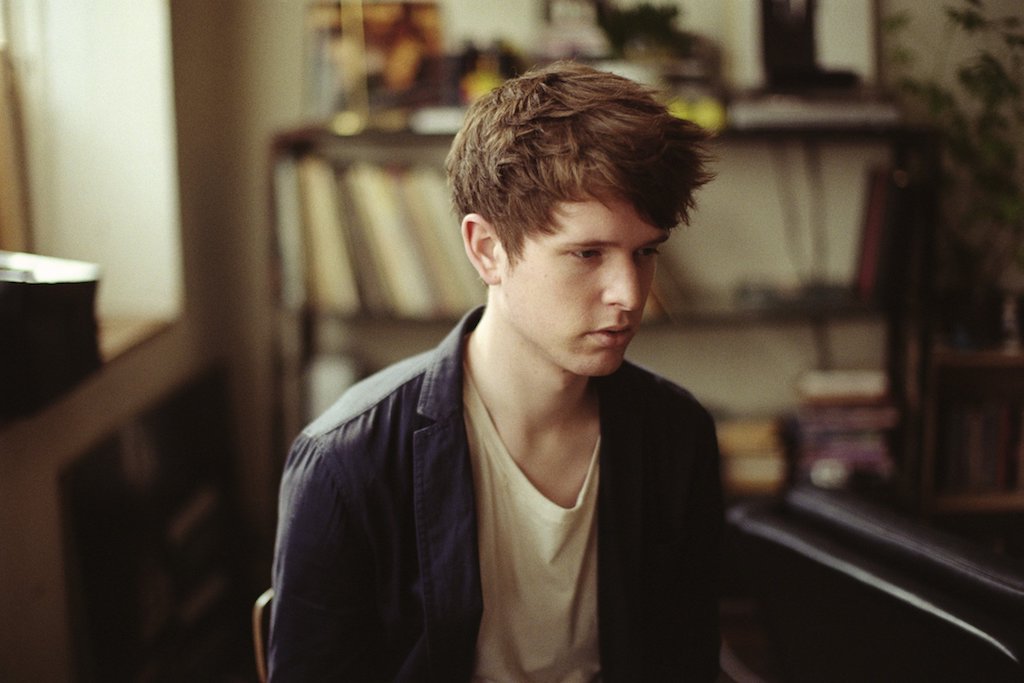In Sydney, James Blake Proved He Is So Much More Than A ‘Sad Boy’
James Blake's voice is spectacular, but the real MVP is his production, which elevates his music into something sublime and difficult to define.

“If you relate to this song that’s cause for concern,” says James Blake, pausing at the mic after the crowd laughs. “That’s a half joke, really.”
Blake, who has mostly stuck to ‘thank you’s and one-line preambles during his first of two shows at Sydney’s Enmore Threatre, is taking time to introduce the first song of his encore, ‘Don’t Miss It’. Emotionally and instrumentally sparse, the song is a call-to-arms to seek help, as Blake sings about trying to keep ‘cyclical thoughts’ of depression from making him miss daily joys, working tirelessly against the instrumentation’s own cyclical nature.
Upon release last year, Pitchfork called it “another beautifully brutal song to add to Blake’s large catalog of sumptuous sad boy music”, and suggested that he merely “needs a night out” to stop moping and return to the club sounds of his early releases.
Blake responded with understandable frustration — not only did Pitchfork’s review miss the point, but it actively transformed a man expressing emotion into a joke. When he tells the Sydney audience that he “fucking wished someone had told” him it was okay to express weakness, it’s clear he’s endeavouring to make it be heard.
The ‘sad boy’ label has followed Blake since his 2011 self-titled debut album, where the producer’s stunning falsetto was centred and his post-dubstep breakdowns shifted from skittering club music to hazy, atmospheric introspection. Given his voice, Blake could easily make generic pop-ballads, but he’s more interested in tone and nuance. He knows that complicated, often contradicting emotions are better expressed not just by his voice, but with throbbing bass and discordant violins, or the shift between stillness and club-beats.
Blake could easily make generic pop-ballads, but he’s more interested in tone and nuance.
And yes, his music is often ‘sad’; Blake’s soundscapes are filled with echo and distortion, his lyrics traverse disconnection. But the word is reductive, reducing Blake’s complex tones to one colour.
That richness is particularly obvious on Assume Form, Blake’s fourth album, released this January — a stunning (if not occasionally sappy) work largely dedicated to exploring the securities and transformative power of love. That message, at least, has gotten through; a quick sweep of the Enmore Theatre’s crowd reveals most of them seem to be coupled up.
Many stay in close contact for the entire set; it’s funny to watch the more insistent of them refuse to part during Blake’s post-dubstep breakdowns, struggling to bob together comfortably.
Live, Blake is joined by two band-members: he’s on keys, then one drums/pads, the other alternating between guitar and a hulking modulator which resembles a space-race computer more than a music-maker. Running through songs across his albums, the drums are put to the forefront; as a result, you can feel Blake’s tempos ebb and flow more than you do on record, making everything feel a little more alien and distorted.
Unlike his other albums, Assume Form is filled with features, and despite them not being there, ‘Barefoot In The Park’ with Rosalía and ‘Where’s The Catch?’ with André 3000 are set highlights.
Blake also plays an unreleased song unlike anything we’ve ever heard by him, built around an ever-escalating ’80s drum line that echoes Jack Antonoff’s band Bleachers, suggesting Blake might lean into pop. It’s odd, but the pivot works, and the crowd’s super receptive.
There are even some ‘shhs’ exchanged for those who didn’t get the memo we’d left the club for the concert hall.
As shown over Blake’s album-spanning set, as a producer he can cover a lot of ground. Paired-back ballads lead into trap-leaning songs into a 10-minute electronic meltdown, a skittering mini-club mix that saw the crowd wolf whistle and sweat it out. The tempo builds then distorts out, and we’re immediately back at Blake warbling into a mic, the room once again quiet. There are even some ‘shhs’ exchanged for those who didn’t get the memo we’d left the club for the concert hall.
While some fans might wish Blake stuck to a sound or just centred his voice, it’s clear his adaptability — his refusal to assume just one form — isn’t just the key to his longevity, but a core component to his music. Without the contrast, there’s no tension; without tension, there’s just empty platitudes.
James Blake’s fourth album, Assume Form, is out now. Feature photo by Mikki Gomez from Splendour In The Grass.
Jared Richards is a staff writer at Junkee, and co-host of Sleepless In Sydney on FBi Radio. Follow him on Twitter.

